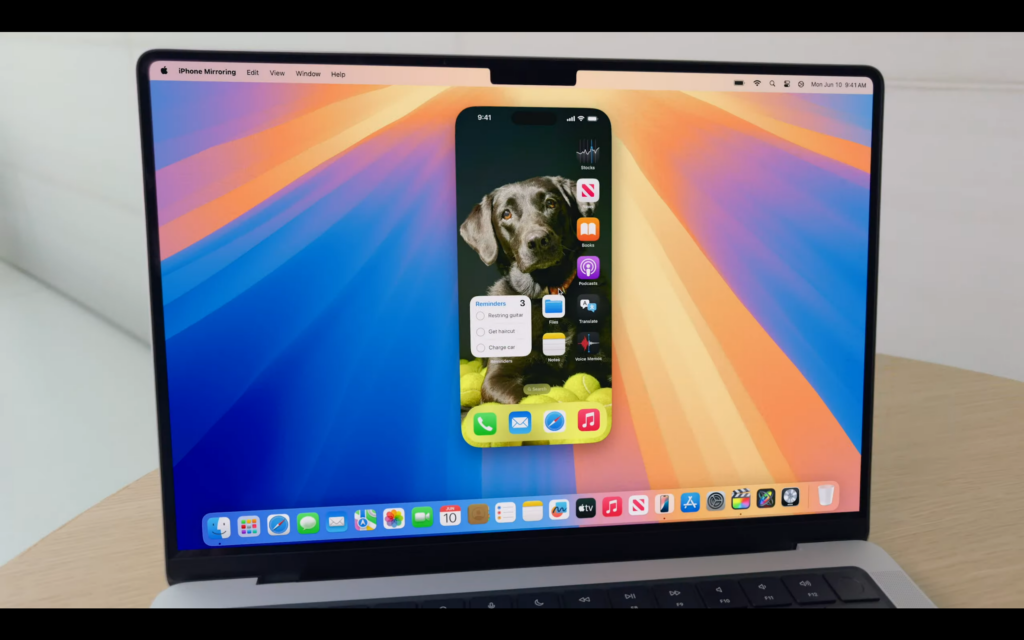Apple has just announced its upcoming macOS upgrade, Sequoia at WWDC24. Although macOS Sequoia is packed with exciting new features, one that’s caught our eye is the new iPhone Mirroring tool.
Read on to learn more about the upcoming iPhone Mirroring feature, which iPhones and Macs are expected to support the tool and when we expect this will be available.
What is iPhone Mirroring?
iPhone Mirroring is an extension of Continuity and allows users to fully access and seamlessly interact with their iPhone from their Mac.
Once enabled, your iPhone’s background, including the wallpaper and icons, will appear on your Mac’s home screen. From here you can swipe between the pages of your home screen, launch or scroll through your apps and even check and respond to your notifications directly by using your Mac’s keyboard, trackpad and mouse.
Users can also seamlessly drag and drop files, photos and more between iPhone and Mac plus audio from iPhone can come through your Mac’s speakers too.
While using iPhone Mirroring, your iPhone can remain locked so no one else will be able to access or see what’s happening.


Which iPhones and Macs will work with iPhone Mirroring?
Apple has yet to confirm which models of iPhone and Mac will be compatible with iPhone Mirroring once it launches later this year, but we can look at the list of iOS 18 and macOS Sequoia-supported devices to get a good idea.
Right now, that includes:
- iPhone from iPhone XS and later
- iMac Pro 2017 and later
- MacBook Pro 2018 and later
- Mac Mini 2018 and later
- iMac 2019 and later
- Mac Pro 2019 and later
- MacBook Air 2020 and later
- Mac Studio 2022
When will iPhone Mirroring be available?
As the iPhone Mirroring feature requires both iOS 18 and the new macOS Sequoia update to work, you’ll need to wait for the release of both operating systems later this year before you can use your iPhone on your Mac.
When it comes to iOS updates, Apple tends to release them alongside new iPhone hardware, something that tends to happen in September – though it has occasionally been a little later. That said, if iOS 18’s development goes to plan, we expect it to appear on iPhones this September.
macOS, on the other hand, usually comes a little later after the iOS 18 update – 2023’s macOS Sonoma launched at the end of September 2023 (which was actually one of the earliest macOS releases in the last five years) just under two weeks after iOS 17. Prior to this, macOS tended to launch late October.
With this in mind, we can expect macOS Sequoia to launch sometime between the end of September and the end of October 2024.

